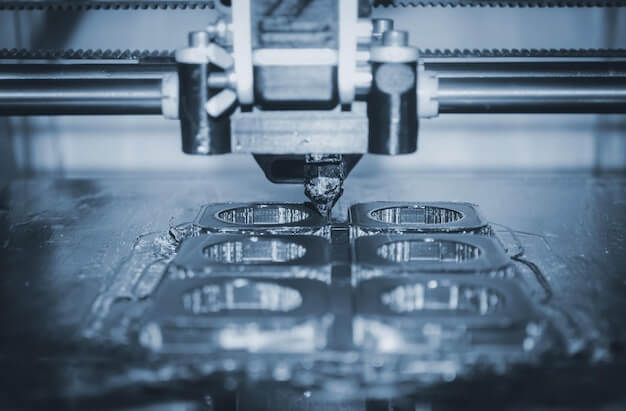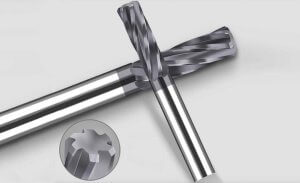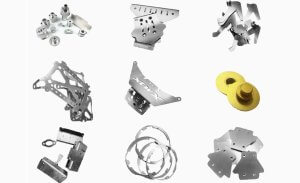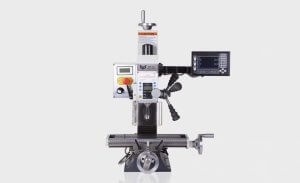Introduction to CNC Machining
Computer Numerical Control (CNC) machining stands as a cornerstone in modern manufacturing, enabling the automated control of machine tools by means of a computer. This technology is pivotal for producing complex shapes with high precision and efficiency. A common challenge in the field is balancing the need for both efficiency and precision during production. For instance, in aerospace component manufacturing, CNC machining allows for the creation of intricate parts with tight tolerances, showcasing the critical role of this technology in achieving high-quality outputs while also striving to minimize waste and production time.
Understanding Light-Weight Metals
Light-weight metals, such as aluminum and titanium, are defined by their low density and high strength-to-weight ratio. These properties make them particularly suitable for CNC machining, a process that benefits from materials that are easy to shape yet maintain structural integrity under stress. Aluminum, known for its excellent machinability, offers a balance of workability, durability, and corrosion resistance, making it a preferred choice for a wide range of industrial applications. Titanium, while more challenging to machine due to its strength, stands out for its exceptional strength-to-weight ratio and corrosion resistance, ideal for aerospace and medical applications. The suitability of these metals for CNC machining lies in their ability to be precisely and efficiently shaped into complex parts without compromising on performance or weight.
Benefits Beyond Speed
When maximizing efficiency in CNC machining with light-weight metals, there are several additional benefits to consider:
- Enhanced Fuel Efficiency: Light-weight metals contribute to improved fuel efficiency in automotive and aerospace applications.
- Reduced Material Costs: The use of light-weight metals can lead to cost savings in material procurement and transportation.
- Design Flexibility: Light-weight metals allow for innovative and intricate designs while maintaining structural integrity.
Benefits Beyond Speed in CNC Machining with Light-Weight Metals
Utilizing light-weight metals in CNC machining extends advantages far beyond merely enhancing speed. Firstly, these materials significantly reduce energy consumption during the machining process, as less force is required to cut through them compared to heavier metals. This efficiency translates into lower operational costs and a smaller carbon footprint. Secondly, the reduced stress on cutting tools means they endure less wear over time, prolonging their lifespan and decreasing the frequency of replacements. Lastly, the lighter weight of finished products lowers shipping costs, making it economically beneficial for businesses that distribute their products globally. An example of this is in the aerospace industry, where the use of light-weight metals not only improves fuel efficiency but also reduces logistics costs, showcasing the multifaceted benefits of these materials in CNC machining.
Challenges and Considerations in Maximizing Efficiency in CNC Machining with Light-Weight Metals
While light-weight metals offer significant advantages in CNC machining, they also present unique challenges and considerations. One major concern is the cost, as materials like titanium and aluminum can be more expensive than traditional metals. Additionally, the availability of these materials can fluctuate, impacting production schedules. To address these issues, one practical solution is the recycling of scrap metal. This not only reduces material costs but also contributes to sustainability efforts. For example, aluminum recycling requires only 5% of the energy used to produce new aluminum from ore, showcasing a significant opportunity for cost savings and environmental benefits. Furthermore, optimizing machining processes to reduce waste and improve yield can mitigate some of the cost concerns associated with using light-weight metals.
Case Study: A Success Story in CNC Machining Efficiency
A notable example of enhancing CNC machining processes through the adoption of light-weight metals is seen in the aerospace industry. Specifically, a leading aerospace company managed to significantly reduce the weight of their aircraft components by integrating aluminum and titanium alloys into their manufacturing. This shift not only improved fuel efficiency but also increased the payload capacity of the aircraft. The technical principles behind this success include:
- Material Selection: Choosing metals such as aluminum and titanium for their high strength-to-weight ratios.
- Design Optimization: Redesigning components to exploit the specific properties of lighter metals without compromising on strength or durability.
- Machining Parameters Adjustment: Optimizing cutting speeds, feed rates, and tool paths to accommodate the unique characteristics of lighter metals, leading to faster production times and lower wear on tools.
This case underscores the importance of material selection and process optimization in maximizing CNC machining efficiency.
Other Articles You Might Enjoy
- CNC Machining for the Energy Sector: Choosing Materials for Efficiency and Reliability
Introduction to CNC Machining in the Energy Sector CNC (Computer Numerical Control) machining stands as a pivotal technology in the energy sector, enabling the precise fabrication of components essential for…
- Optimizing CNC Machining with Hybrid Materials: Benefits and Challenges
Introduction: CNC Machining and the Role of Hybrid Materials CNC machining, short for Computer Numerical Control machining, is a manufacturing process where pre-programmed computer software dictates the movement of factory…
- The Future of Medical Device Manufacturing: CNC Machined Stainless Steel
Introduction to Medical Device Manufacturing Medical device manufacturing is a crucial sector in the healthcare industry, powering a myriad of medical procedures and treatments worldwide. This field involves the design,…








